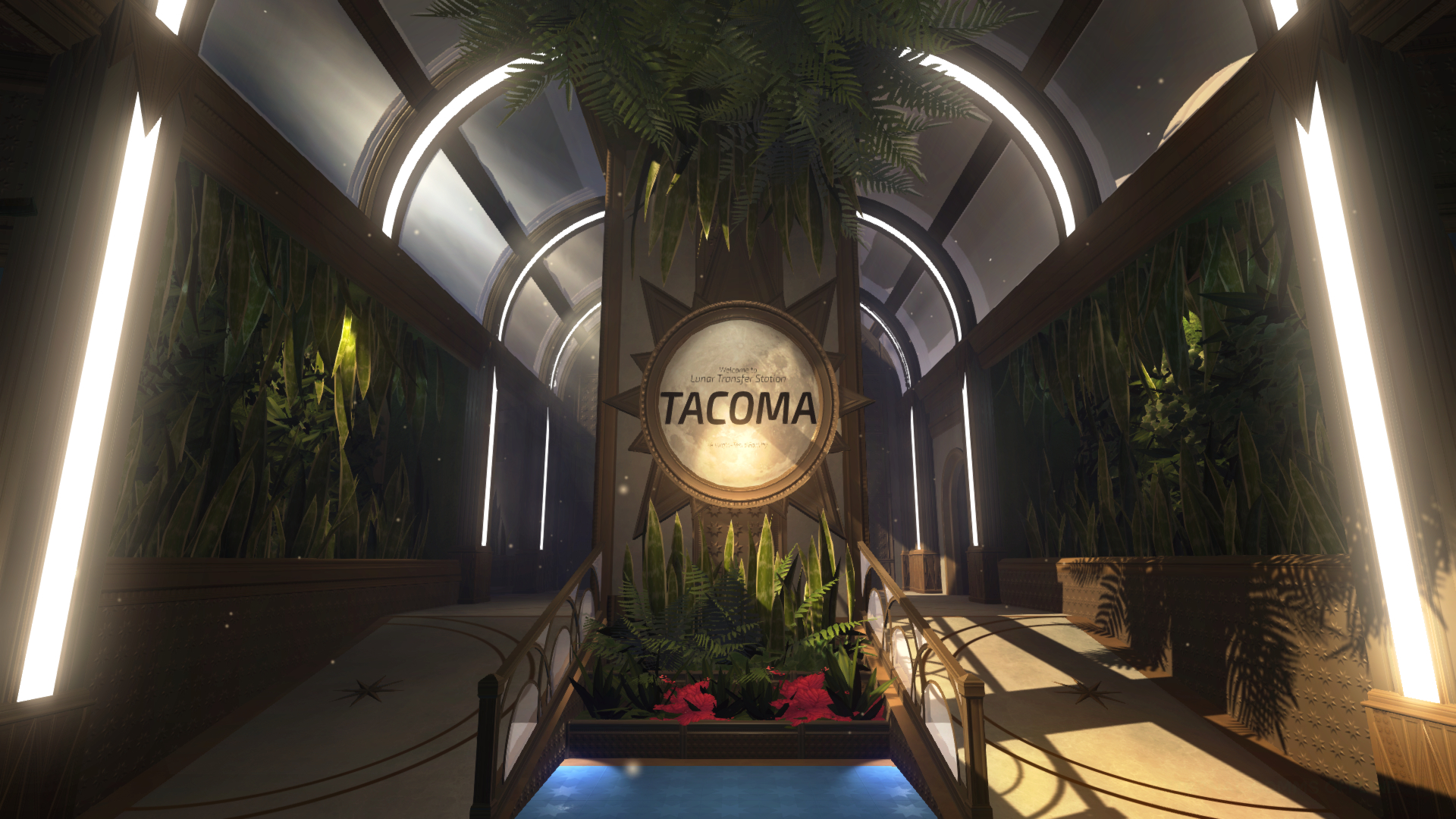Indie Spotlight and Review: ‘Tacoma’

Luke Silvers ’20 / Emertainment Monthly Staff Writer
On a dark night in August of 2013, I played the entirety of Gone Home, the debut title of indie startup The Fullbright Company, on the couch in my family’s living room. After I finished, instead of getting up and moving on with my life like any normal person would after finishing a game, I stayed in place and cried for at least ten minutes. Granted, I was an overly sensitive fifteen-year-old at the time, but never before had a game had such a profound impact on me, let alone a game no more than a couple of hours long. Now, almost four years later, Fullbright’s second game is finally available.
In Tacoma, you play as Amy Ferrier, a subcontractor sent to extract a powerful AI from the titular Lunar Transfer Station who learns the fate of its crew that was met with catastrophe only days prior. Much like Gone Home, Tacoma places its emphasis on environmental storytelling: instead of fighting enemies, you travel throughout the station and learn volumes about the lives of the six individuals that called the station home, each with their own deep past and complex character.

As the player enters each area of the station, they can access simulations that they can pause, rewind, and fast-forward at will, simulations showing the life of the crew both before and after they were met with disaster. Tacoma thrives on interaction, as the relationships between the characters show the individuals that they are: a doctor haunted by the mistakes of her past, a botanist who dearly misses the family that he left back on Earth, an engineer forced to face the mortality of both herself and the woman she loves. They’re flawed, but likable. They’re fictional, yet very real.
One of Gone Home’s major strengths was its impressively authentic snapshot of life in the 1990s, a life of punk mixtapes on cassettes and VHS recordings of The X-Files reruns. Since Tacoma takes place on a space station in the late 21st century, Fullbright obviously didn’t exactly have the option to bank on the same kind of nostalgia that helped make their first game a success. Instead, Tacoma is a window to a brave new future that presents its own reality within the details of its environment. Artifacts like magazines and journals located around the station put Tacoma’s vision of 2088 on display: corporations like Hilton and Amazon run private universities, space workers’ unions are fighting tooth and nail against the rise of automation, and Elon Musk is considered one of the best presidents that the United States ever had take office. It’s the kind of world that we’ve seen dozens of times before on both the page and the screen, but Tacoma presents its reality in such a unique way that everything still feels fresh. While most fictional futures come across as chrome and robotic, Fullbright has created a future that feels truly human.

When Gone Home was released, its “walking simulator” style made the game a magnet for criticism, often from those refusing to consider it a “real game.” Since Tacoma shares this style, I have no doubt that it’ll be under its fair share of internet comment fire over the coming months. If you prefer games with exciting action and fast-paced combat, then Tacoma isn’t the game for you, but if you were as impressed by Gone Home than I was back in 2013, then Tacoma will not disappoint. It’s not a perfect game: it’s short, around two to three hours depending on how much you choose to explore, and it feels less intimate and more detached than its predecessor. However, even though it doesn’t involve super-soldiers, machine guns, or zombies, regardless of whether or not it’s a “real game,” Tacoma is a masterfully-crafted adventure I will remember for years to come, one that was worth waiting an entire four years for.